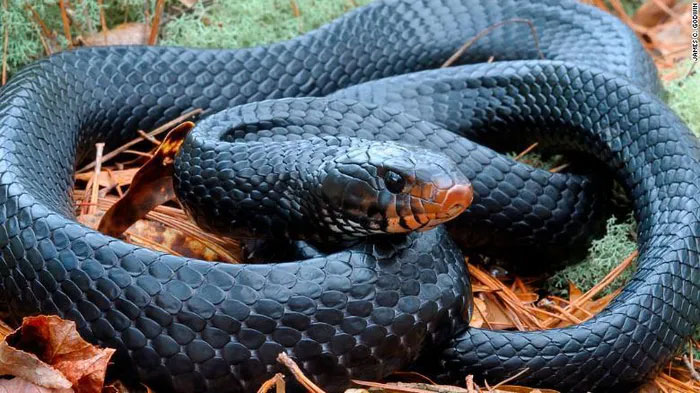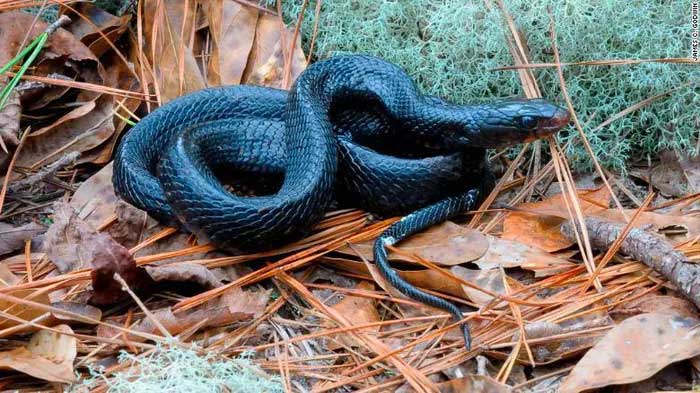The Eastern Indigo Snake, a rarely seen species, has unexpectedly appeared in Alabama, USA. This marks only the second sighting in over 60 years.
The Eastern Indigo Snake is a non-venomous snake that is typically solid black and is the longest native snake in North America. Adult snakes can grow up to 2.8 meters long and weigh between 2.5 to 5 kg.


The Eastern Indigo Snake is an apex predator in longleaf pine forests.
This largest snake species, originally from the United States, was once found throughout Alabama but went extinct in the 1950s primarily due to habitat loss.
According to experts, the sighting of the Eastern Indigo Snake in the wild marks a significant success for the intensive program aimed at reintroducing this reptile to Alabama.
Jim Godwin, a biologist involved in the Alabama Natural Heritage Project managed by the Auburn University Museum of Natural History, stated that the Eastern Indigo Snake is an apex predator in longleaf pine forests. Therefore, the decline in the snake population has a “domino effect” on other species within the ecosystem.
A representative from the Alabama Freshwater Fisheries and Wildlife Agency remarked: “The newly discovered snake indicates that the project is progressing; the indigo snakes are beginning to reproduce and thrive, just as we hoped. Reintroducing a species to its native range is a challenging task, and we are excited to have discovered this snake.”

Experts examine the Eastern Indigo Snake found in Alabama, USA.
According to the Alabama Department of Conservation and Natural Resources, both Eastern Indigo Snakes found in Alabama were discovered by chance. This species is small and very difficult to detect as they hide well.
Throughout the winter, the project team monitored the burrows of gopher tortoises, where mature Eastern Indigo Snakes breed during the colder months, in search of the snakes.
In 2006, a group of Alabama conservationists launched a project to reintroduce the Eastern Indigo Snake to the area. The ultimate goal is to return a total of 300 snakes, creating a healthy population in Alabama.
They are non-venomous, but they have a unique trait: they can eat other venomous snakes, such as rattlesnakes, due to their immunity to rattlesnake venom. This species is considered one of the most beautiful snakes in the world, thanks to its striking black coloration.


















































